The BEST episodes of The Sky at Night
Every episode of The Sky at Night ever, ranked from best to worst by thousands of votes from fans of the show. The best episodes of The Sky at Night!
Sir Patrick Moore (1923-2012) began presenting The Sky at Night in April 1957. Airing a new episode every month, the show continues to explore our solar system and beyond. It is the longest running science show on TV. Many famous people have appeared on The Sky at Night, among them: Harlow Shapley, Carl Sagan and Jocelyn Bell-Burnell. Many astronauts have also appeared, including Neil Armstrong and Buzz Aldrin. Recordings of most of the early episodes no longer exist.
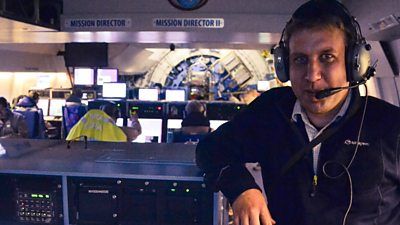
#3 - The Flying Telescope
Season 2018 - Episode 11 - Aired 12/9/2018
Chris Lintott visits an observatory aboard a jumbo jet, which carries an infra-red telescope able to observe space from the vantage point of 40,000 feet above sea level. Plus, a look at how planets form and why fewer newly formed stars are being recorded.
Watch Now:Amazon#4 - When Planets Loop The Loop
Season 1982 - Episode 4 - Aired 4/4/1982
The retrograde motion of Mars, Jupiter and Saturn
Watch Now:Amazon
#5 - The Billion Pixel Camera
Season 2015 - Episode 1 - Aired 1/11/2015
The Milky Way, our galaxy, is a magnificent sight in the night sky, but we know surprisingly little about it for certain. What is its shape? How many stars does it actually contain? What lies at its centre? The Gaia space telescope will answer these questions, being armed with the most advanced camera to leave our planet, and it will allow us to see our galaxy as we've never seen it before. The Sky at Night visits the factory in Chelmsford that made the astonishing sensor at the heart of the mission.
Watch Now:Amazon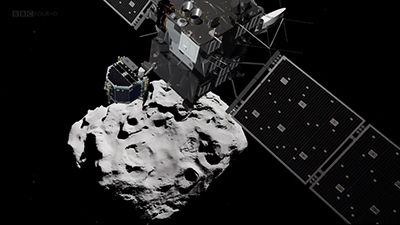
#6 - Rosetta: A Sky at Night Special
Season 2014 - Episode 10 - Aired 11/16/2014
It is one of the most extraordinary space adventures in a generation - to land a spacecraft on a comet. The European Space Agency's (ESA) Rosetta spacecraft has been hurtling through space for over 10 years, tracking down a comet called 67P/Churyumov-Gerasimenko. Now it is about to do something that has never been attempted before and land a spacecraft on the comet's surface. This special episode of The Sky at Night puts the viewer right at the heart of the action, witnessing events as they happened from inside mission control. It reveals the latest images, explores the first groundbreaking science coming back from the comet and asks the astonishing questions that make this mission so captivating. Could Earth's water have come from comets? How do comets survive for so long? Could they have triggered the start of life on Earth? The journey has been fraught with risk and at every stage the comet seems to surprise, but if the mission succeeds it will be a momentous day in the history of space exploration.
Watch Now:Amazon#7 - Moore Moon Marathon
Season 2013 - Episode 11 - Aired 11/7/2013
The moon is a most familiar sight in our sky - it is the astronomer's friend and was Sir Patrick Moore's favourite object - yet fundamentally we still do not know how it was formed and why its far side looks so different. The team join astronomers on Blackheath to watch a lunar eclipse; find out how everyone got in the Moore Moon Marathon, the list of fascinating features you can see on the moon; and discuss the new missions that will explore this reassuringly familiar yet still most mysterious of cosmic satellites
Watch Now:Amazon#8 - The Man Who Discovered A Planet
Season 1980 - Episode 3 - Aired 3/20/1980
For this programme, Patrick Moore flew to Arizona to meet Professor Tombaugh and to ask him what he now thought about the curious planet he discovered half a century ago.
Watch Now:Amazon#9 - Pioneer To Saturn
Season 1979 - Episode 11 - Aired 9/19/1979
Patrick Moore and Dr Garry Hunt discuss the American probe Pioneer II's attempt at surveying Saturn and its rings from close range.
Watch Now:Amazon#10 - Mariner To Mars
Season 1969 - Episode 9 - Aired 8/3/1969
Patrick Moore takes a look at the close up pictures of Mars taken by the American Mars probe, Mariner 6.
Watch Now:Amazon#11 - Fatal Attraction
Season 2013 - Episode 9 - Aired 9/2/2013
Black holes are the beating heart of galaxies. It seems that they are pivotal in their evolution, but they also have a destructive side. A dust cloud more massive than the size of the Earth is on a doomed course, as it careers towards the black hole at the centre of our galaxy. Chris Lintott talks to the Astronomer Royal about this cataclysmic encounter.
Watch Now:Amazon#12 - Storm Chasing
Season 2011 - Episode 5 - Aired 5/5/2011
In the atmosphere of Saturn there is a gigantic storm, which is bigger than Earth itself. This month Sir Patrick Moore looks at the ringed planet, which can be seen in our night sky now. He talks to Paul Abel and Dr Chris North about these violent eruptions in the atmospheres of other worlds. And Jon Culshaw, Dr Lucie Green and Pete Lawrence travel to north Norway in search of the aurora borealis.
Watch Now:Amazon#13 - Double Star Party
Season 2011 - Episode 4 - Aired 4/4/2011
Sir Patrick Moore joins an unlikely star party in the heart of London, where enthusiastic astronomers are cutting through the light pollution to see the planets and stars. Dr Chris Lintott also drops in on another star party - the 88th birthday celebrations for the nation's most famous astronomer.
Watch Now:Amazon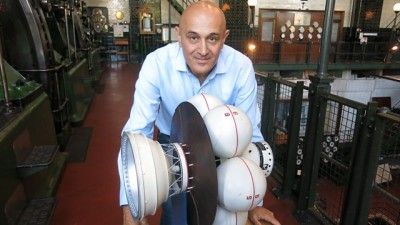
#14 - Interstellar: The Journey to Proxima Centauri
Season 2016 - Episode 7 - Aired 9/11/2016
Chris Lintott and Maggie Aderin-Pocock report on the recent discovery of a planet with similar qualities to Earth orbiting Proxima Centauri, the nearest star to our solar system. The programme examines what the environment of this world might be like and the logistics of building a spacecraft capable of travelling 4.23 light years to reach it.
Watch Now:Amazon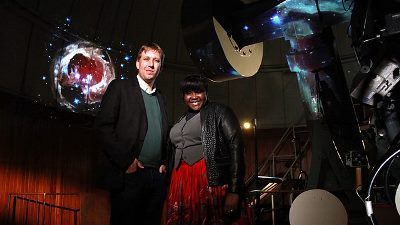
#15 - Hubble: The Five Greatest Images of the Cosmos
Season 2015 - Episode 3 - Aired 4/12/2015
For 25 years the Hubble Space Telescope has been showing us the cosmos as we've never seen it before. The team reveals the 'top five' greatest images Hubble has produced, images that have astounded us, transforming our understanding of the universe and our place in it.
Watch Now:Amazon
#16 - Into the Dark Zone
Season 2017 - Episode 5 - Aired 7/9/2017
The team looks at the trans-Neptunian objects - a vast number of strange, dark, icy worlds - which played a crucial role in the evolution of our solar system.
Watch Now:Amazon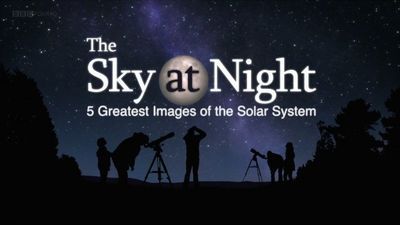
#17 - Five Greatest Images of the Solar System
Season 2016 - Episode 2 - Aired 3/13/2016
For 50 years we have been sending probes to gather close-up images of the other planets and moons of the solar system. The Sky at Night presents the five greatest images captured by those spacecraft. From a view of the surface of Mars, to live pictures of the sun and a unique picture of our own planet, these are the images that have transformed our perception of the solar system we live in.
Watch Now:Amazon#18 - Home-Grown Observatories
Season 2012 - Episode 8 - Aired 8/13/2012
Up and down the country amateur astronomers are out in their back-garden observatories looking at stars, galaxies and nebulae. The team visits some astronomers on their own turf, to find out what keeps them up late at night.
Watch Now:Amazon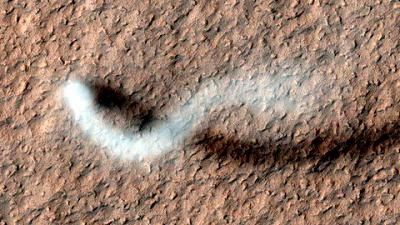
#19 - Mysterious Mars
Season 2014 - Episode 3 - Aired 4/13/2014
Mars captures the imagination like no other planet and currently our nearest neighbour is at its brightest for several years, so it's a perfect opportunity to explore a planet that is tantalisingly similar to our own. And in the past it may have been even more like Earth, an inviting and habitable place, a perfect environment for life to flourish. Geologist Iain Stewart investigates how we can read the story of Mars's extraordinary past from its rocks, Maggie Aderin-Pocock comes face to face with the latest Mars rover and Chris Lintott meets the man behind the discovery which the whole history of the universe now rests upon.
Watch Now:Amazon#20 - Citizen Astronomy
Season 2012 - Episode 3 - Aired 3/4/2012
A look at how amateur astronomers can help in the quest for knowledge of the cosmos.
Watch Now:Amazon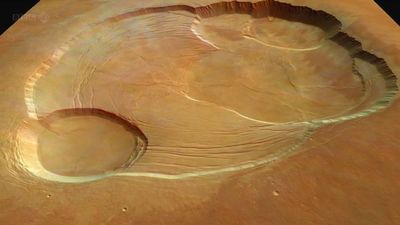
#21 - Curious about Mars
Season 2011 - Episode 11 - Aired 11/10/2011
As Mars returns to our night skies, Sir Patrick Moore discusses its four faces. Dr Chris Lintott travels to a world gathering of planetary scientists in Nantes to find out about the NASA mission Curiosity, which will soon leave for the red planet in search of signs of life.
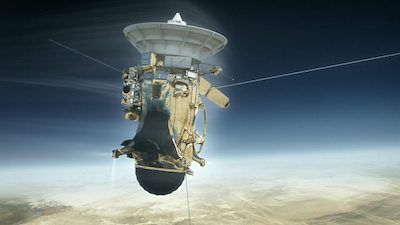
#22 - Cassini - The Gamechanger
Season 2017 - Episode 7 - Aired 9/10/2017
On 15 September 2017, the most successful space mission of all time will come to a dramatic and violent end as the Cassini probe is sent crashing into the planet Saturn. This one space probe has rewritten the rules of space exploration, repeatedly surprising scientists with its incredible and unexpected observations. It discovered lakes of pure methane on Saturn's moon Titan, mysterious weather systems on Saturn itself, and all the conditions for life on the moon Enceladus. It has exceeded every expectation of its original design brief, and its mission duration has been extended not once but four times. Its legacy for science and for space travel is unique. Chris Lintott and Maggie Aderin-Pocock explore four major ways in which space exploration of the future has been changed by the discoveries of the Cassini mission.
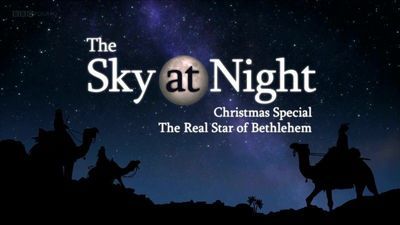
#23 - The Real Star of Bethlehem: A Christmas Special
Season 2015 - Episode 11 - Aired 12/30/2015
Astronomers have been fascinated by the idea of the Star of Bethlehem for centuries. Did it exist? And if so, what was it? The list of candidates includes some of the most exciting objects in the night sky - supernovae, comets, meteors and unusual alignments of the giant planets. In this surprising and entertaining Christmas special the Sky at Night team go in search of the potential causes of the Star of Bethlehem. The team explore the possibilities, investigating the nature of the phenomena and digging through the historical records including Babylonian clay tablets and ancient Chinese manuscripts, to reconstruct events in the night sky 2,000 years ago. Maggie Aderin-Pocock goes hunting for supernovae using the most powerful laser in Britain, and discovers that these mighty explosions caused by the death of stars can shine brighter than the moon in our sky. Chris Lintott reconstructs the night sky over Jerusalem at the time of Jesus's birth, discovering a once-in-a-millennium conjunction of Saturn and Jupiter that was first suggested as a cause of the star by the great astronomer Johannes Kepler in 1604. Armed with his telescope, Pete Lawrence searches out the features of the night sky we can observe today that may provide clues to the origin of the Star of Bethlehem. Professor Alan Fitzsimmons explains why the sudden appearance of a comet in the night sky has always been seen as an omen of great events on Earth. Dallas Campbell goes in search of the historical and archaeological records that can shed light on the identity of the star. Finding Babylonian tablets in the vaults of the British Museum and ancient Chinese texts that record all the unusual events in the night sky 2,000 years ago, including a bright new star that appeared for 70 days in the year 5BC.
#24 - Return To The Moon
Season 1994 - Episode 3 - Aired 3/6/1994
Clementine spacecraft orbiting Moon.
#25 - Neptune: Voyager's Last Planet
Season 1989 - Episode 10 - Aired 9/10/1989
Voyager 2 has now passed Neptune, sending back remarkable new information about this distant planet. Patrick Moore and guests summarise what has been discovered. (1989)